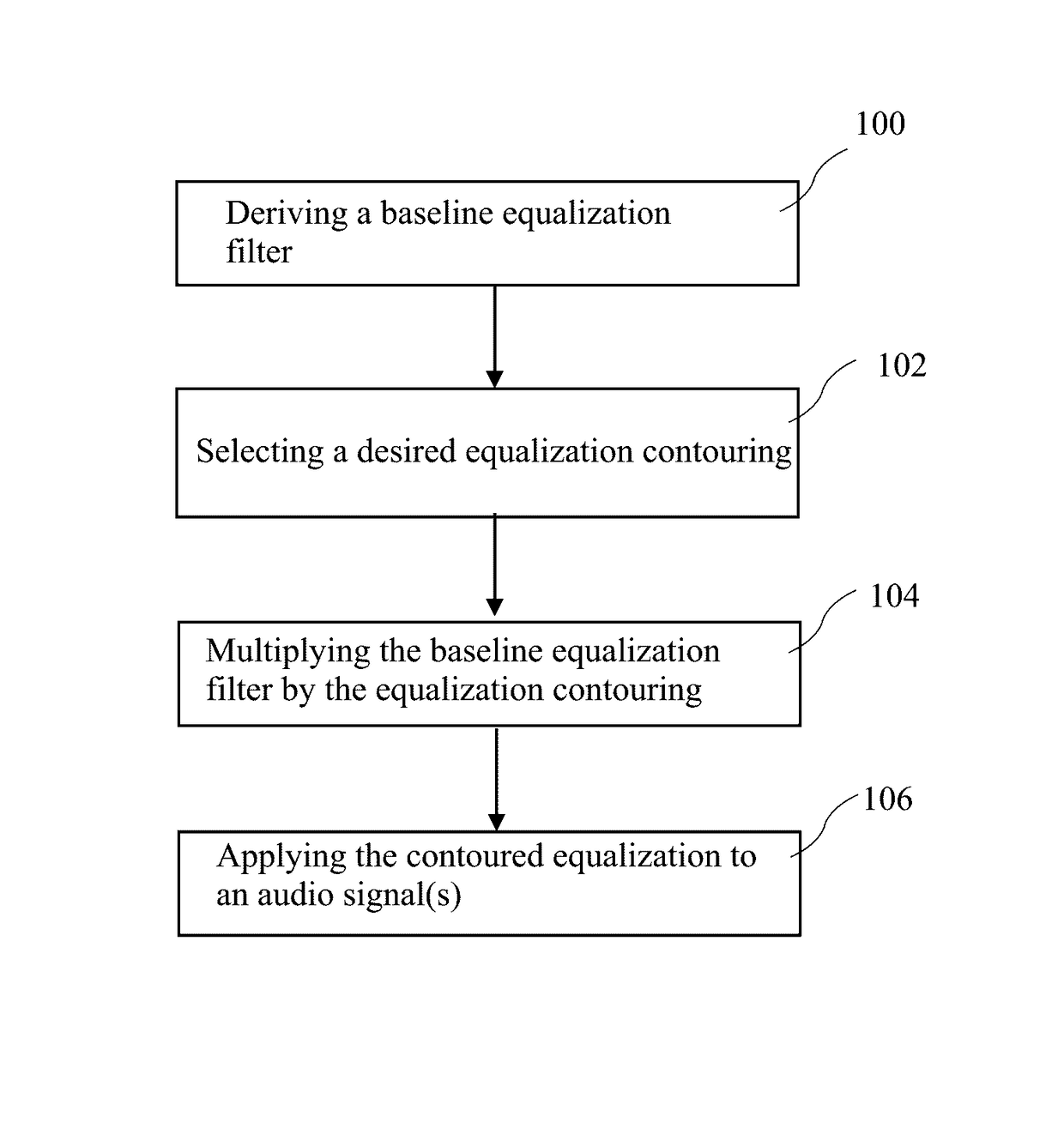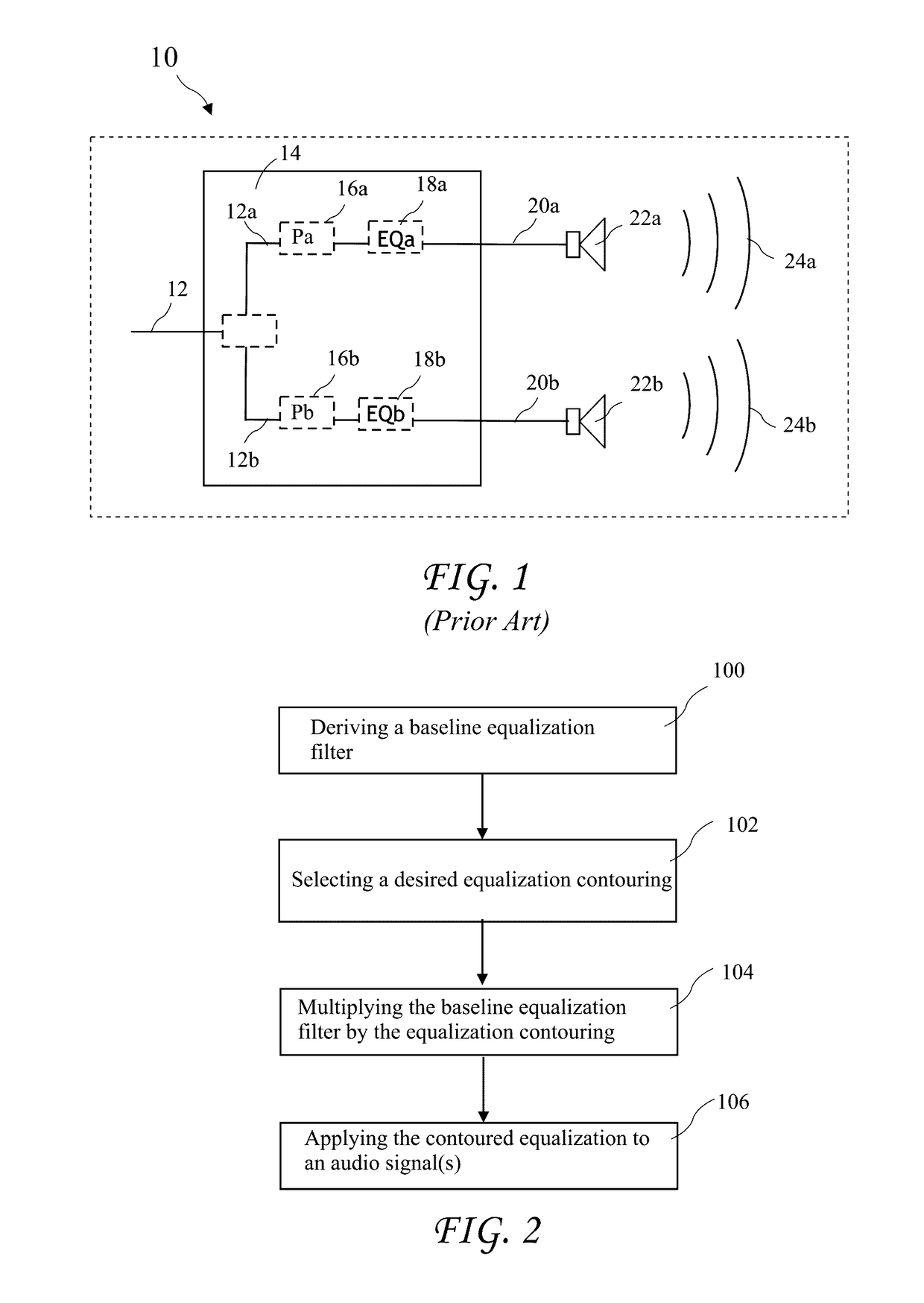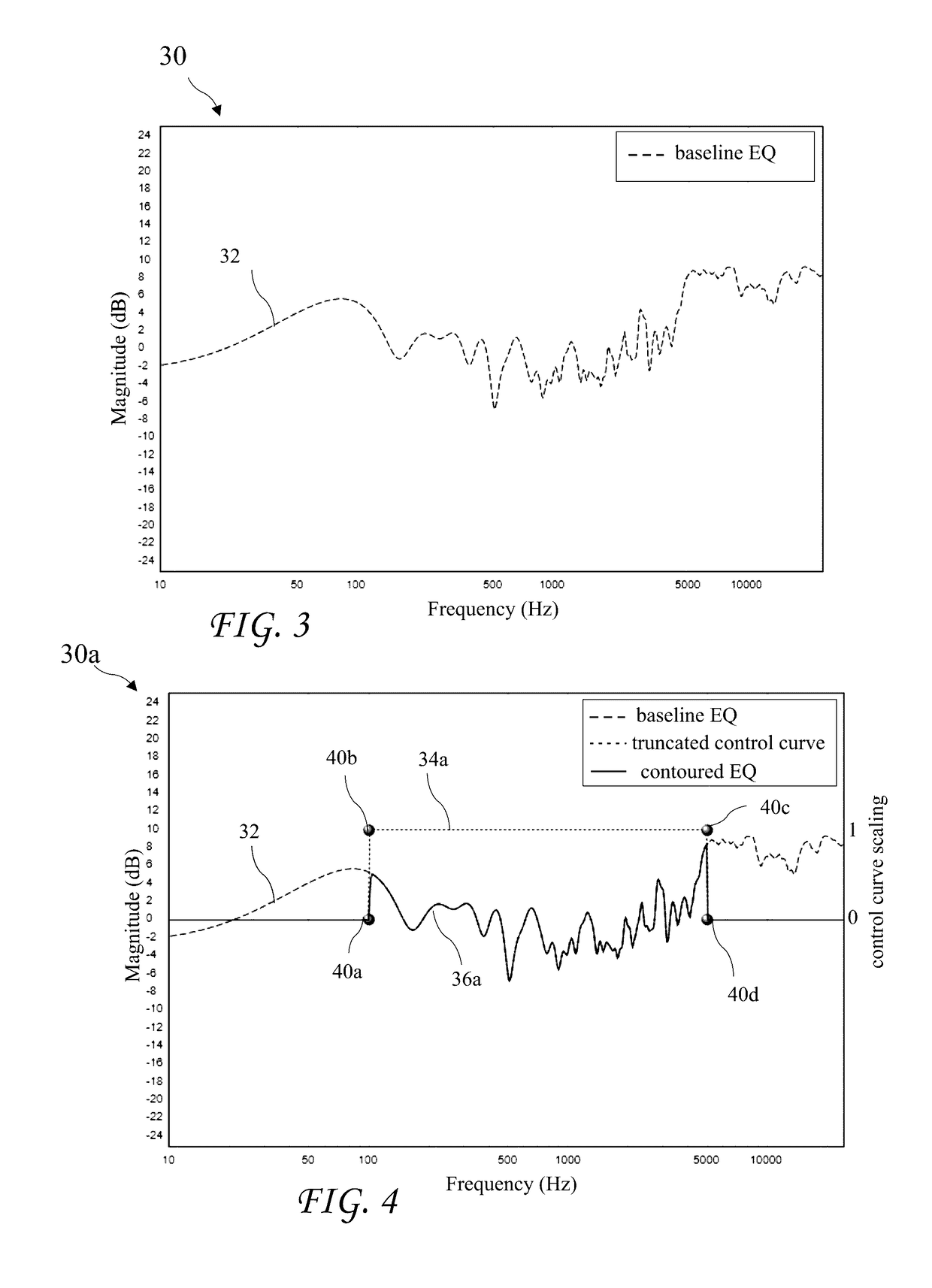Equalization contouring by a control curve
a control curve and equalization technology, applied in the field of signal equalization, to achieve the effect of smooth scaling of the magnitude of the equalization and reducing the equalization
- Summary
- Abstract
- Description
- Claims
- Application Information
AI Technical Summary
Benefits of technology
Problems solved by technology
Method used
Image
Examples
Embodiment Construction
[0022]The following description is of the best mode presently contemplated for carrying out the invention. This description is not to be taken in a limiting sense, but is made merely for the purpose of describing one or more preferred embodiments of the invention. The scope of the invention should be determined with reference to the claims.
[0023]An example system level description of a prior art two-channel 12a and 12b audio system 10, with equalization filters 18a and 18b in the channels 12a and 12b for modifying and / or correcting loudspeaker-room acoustics, is shown in FIG. 1. The equalization filters 18a and 18b are in series with signal processing 16a and 16b respectively. The system 10 receives a signal 12 including the two channels 12a and 12b processed in parallel. The equalization filters 18a and 18b process the channels 12a and 12b to provide equalized signals 20a and 20b provided to speakers 22a and 22b. The equalization filters 18a and 18b are designed to process the chan...
PUM
 Login to View More
Login to View More Abstract
Description
Claims
Application Information
 Login to View More
Login to View More - R&D
- Intellectual Property
- Life Sciences
- Materials
- Tech Scout
- Unparalleled Data Quality
- Higher Quality Content
- 60% Fewer Hallucinations
Browse by: Latest US Patents, China's latest patents, Technical Efficacy Thesaurus, Application Domain, Technology Topic, Popular Technical Reports.
© 2025 PatSnap. All rights reserved.Legal|Privacy policy|Modern Slavery Act Transparency Statement|Sitemap|About US| Contact US: help@patsnap.com



